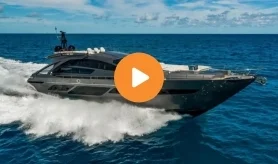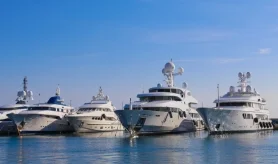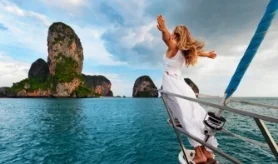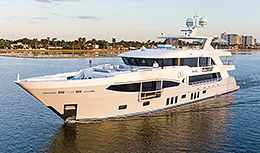- Alaskan Yachts
- Azimut Yachts
- Back Cove Yachts
- Beneteau Yachts
- Benetti Superyachts
- Bertram Yachts
- Boston Whaler
- Broward Yachts
- Buddy Davis Sportfish
- Burger Yachts
- Cabo Yachts
- Catamarans
- Carver Motoryachts
- Center Console
- Chris-Craft Yachts
- Cruisers Yachts
- DeFever Trawlers
- Dufour Sailboats
- Fairline Yachts
- Feadship Yachts
- Ferretti Yachts
- Formula Yachts
- Fountaine Pajot Cats
- Grady-White
- Grand Banks Trawlers
- Hargrave Yachts
- Hatteras Yachts
- Hinckley Picnic Boats
- Horizon Yachts
- Hydra-Sports
- Intrepid Boats
- Jarrett Bay Sportfish
- Jeanneau Yachts
- Kadey-Krogen Trawlers
- Lazzara Yachts
- Lekker Boats
- Luhrs Sportfish
- Marlow Yachts
- Maritimo Yachts
- Marquis Yachts
- McKinna Motoryachts
- Meridian Yachts
- Midnight Express
- MJM Yachts
- Mochi Craft
- Neptunus Motoryachts
- Nordhavn Trawlers
- Nordic Tugs
- Numarine Yachts
- Ocean Alexander Yachts
- Offshore Yachts
- Outer Reef
- Oyster Sailing Yachts
- Pacific Mariner Yachts
- Palmer Johnson Yachts
Explorer Yacht Scintilla Maris: Sea of Dreams
Erik Vonk, owner of Scintilla Maris, describes how he transformed a 30-year-old fishing trawler into a standout explorer yacht.
This article was written by Julia Zaltzman. Photography courtesy of Burgess.
To paraphrase rap artist Skee-Lo: “I wish I was a little bit taller, I wish I had a trawler, I wish I had a boat I could use as my explorer.” Dutch entrepreneur Erik Vonk may have waited 15 years for his wish to come true, but he finally caught sight of the Norwegian fjords while cruising aboard his 150-foot build project, Scintilla Maris, this summer.
The maiden voyage saw the boat cruise from the Netherlands to London, before embarking on the “Cool Route”, passing through Ireland, Scotland, and the Faroe Islands. His hope is to eventually reach the higher latitudes, possibly even Svalbard above the Arctic Circle.

“I’m very much looking forward to spending time in the Arctic and the Pacific Northwest, the whole area between Seattle, Vancouver, and the Inland Passage,” says Vonk. “I want to sail the Northwest Passage, and, after that, spend time in Indonesia and the South Pacific.”
And why not? After all, global expedition cruising is an easy option compared to the treacherous North Sea conditions the boat was originally built to navigate. Constructed by Damen Maaskant in 1988 as a single-prop fishing trawler, Scintilla Maris is more of a rebuild than a refit–and one that Vonk took on by himself. He spent a decade measuring, designing, and outlining specifications, before a four-year conversion at Damen saw the hull stripped back to bare metal and the interior, infrastructure, decking, and machinery ripped out.

“I wanted a yacht that pairs comfort with limitless capability,” he says, careful to note the difference between comfort and luxury. “I’ve been aboard enough white boats to know that’s not for me. I want to walk about with wet feet and not worry I’m ruining the carpets.”
The blue-eyed businessman is a serious trawler fan (he also owns a small, converted tugboat). As such, he was keen to retain an industrial aesthetic. The yacht’s large open deck areas with seating on every level–including a Portuguese bridge forward of the wheelhouse–elevate the guest experience. The biggest modification is a 9.8-foot extension to the aft superstructure to create more interior volume, and cutouts amidships starboard and port for easy access to the water–one of Vonk’s key stipulations. “I think it’s psychologically wrong to access the sea from the stern,” he says.

Even more impressive is the reduction of the vessel’s substantial 570 gross tons to below the 500-gross-ton threshold, a feat achieved with the assistance of Dutch design studio Vripack, who Vonk engaged halfway through the project to style the interior. The Scandi-chic vibe uses high-pressure laminate in place of wood, delivering on Vonk’s “durable, no fuss” brief. Loft-like ceilings and a proliferation of portholes and skylights fill the areas with natural light.
Then there’s the yacht’s sustainable improvements. A new hybrid-electric propulsion system complies with stricter emissions regulations. Vonk also devised thermostatic piping that wraps around the outdoor walkway and uses heat recovered from the generators.

Upcycled original features include the hatch into the fish hold, now a supersized skylight in the impressive full-beam owner’s suite, while the unusual forecastle deck that was originally used for refrigerated fish storage is today a quirky barbecue and bar area that doubles as an outdoor boot room.
Sitting in his state-of-the-art integrated bridge, which gives the yacht “the optimal situational awareness that is needed for our kind of remote exploration,” Vonk’s excitement is palpable. Exhilaration for the adventures that lay ahead, and elation at seeing his 15-year vision come to life.
“I walk around amazed at how well it’s worked out,” he says. “I see things, remember my reasoning behind them, and think, ‘God, that was smart.’”

Request a Copy





